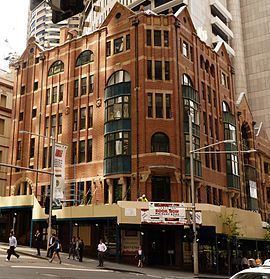Type Street East end George Street | Length 350 m (1,100 ft) | |
 | ||
West end York Street / Bradfield Highway | ||
Grosvenor Street is a street in the central business district of Sydney in New South Wales, Australia. Grosvenor Street runs 350 metres (1,150 ft) in an east to west direction, with traffic flowing in both directions. The eastern terminus is at George Street and the western terminus is at the junction of York Street with the Bradfield Highway. There are no major cross streets.
Contents
Map of Grosvenor St, Sydney NSW 2000, Australia
Originally named Charlotte Square by Governor Macquarie in 1810 in honour of Charlotte of Mecklenburg-Strelitz, the wife of King George III, Grosvenor Street was renamed in 1889 after the Grosvenor Hotel that was located at the intersection of intersection of Grosvenor and Cumberland Streets.
Points of interest
References
Grosvenor Street, Sydney Wikipedia(Text) CC BY-SA
